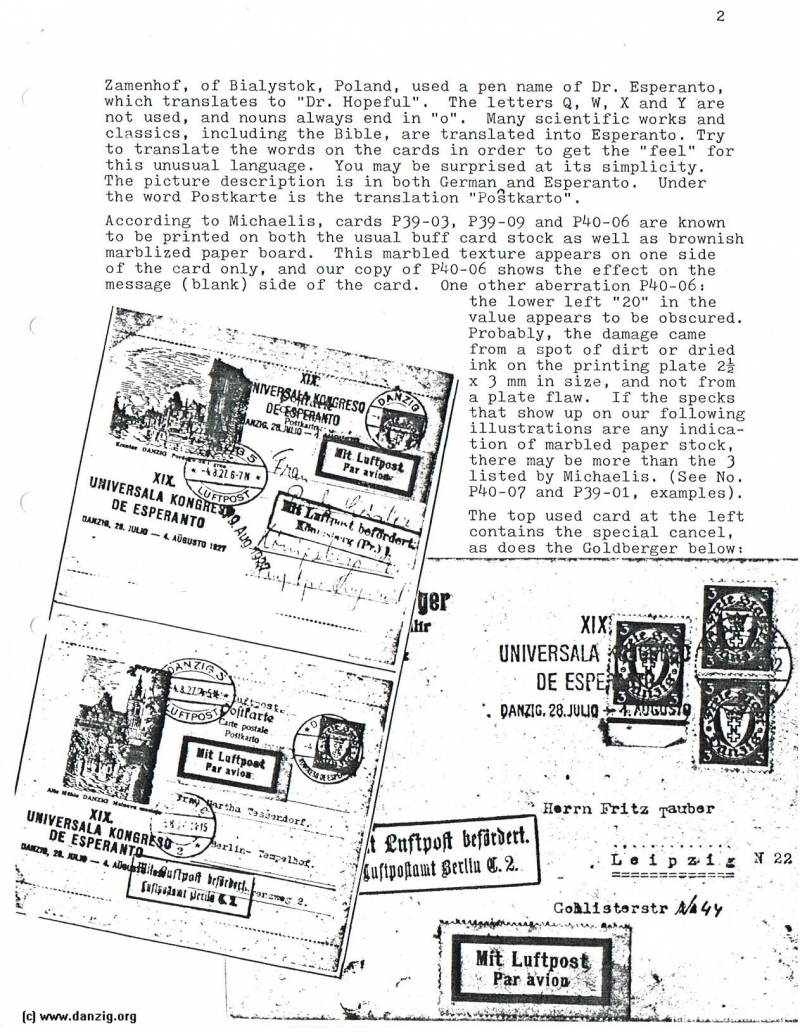
>> ESPERANTO is the subject
Zamenhof, of Bialystok, Poland, used a pen name of Dr. Esperanto, which translates to “Dr. Hopeful”. The letters Q, W, X and Y are not used, and nouns always end in “o”. Many scientific works and classics, including the Bible, are translated into Esperanto. Try to translate the words on the cards in order to get the “feel” for this unusual language. You may be surprised at its simplicity. The picture description is in both German and Esperanto. Under the word Postkarte is the translation “Postkarto
According to Michaelis, cards P 39-03, P 39-09 and P 40-06 are known to be printed on both the usual buff card stock as well as brownish marbled paper board. This marbled texture appears on one side of the card only, and our copy of P 40-06 shows the effect on the message (blank) side of the card. One other aberration P 40-06: the lower left “20” in the. value appears to be obscured. Probably, the damage came from a spot of dirt or dried ink on the printing plate 2 x 3 mm in size, and not from a plate flaw. If the specks that show up on our following illustrations are any indication of marbled paper stock, there may be more than the 3 listed by Michaelis. (See No. P 40-07 and P 39-01, examples).
The top used card at the left contains the special cancel, as does the Goldberger below:
Danzig Report Nr. 34 - 1st Quarter 1982, Page 2.
Hits: 3394
Added: 11/06/2015
Copyright: 2025 Danzig.org

